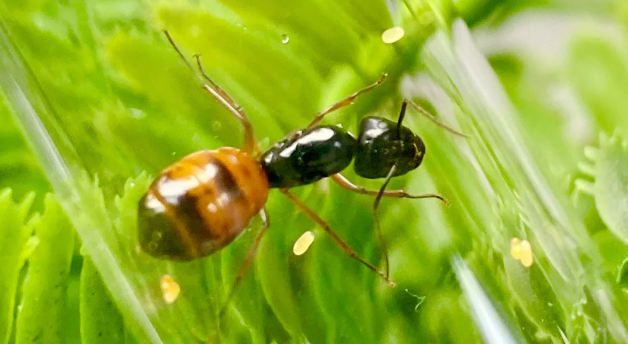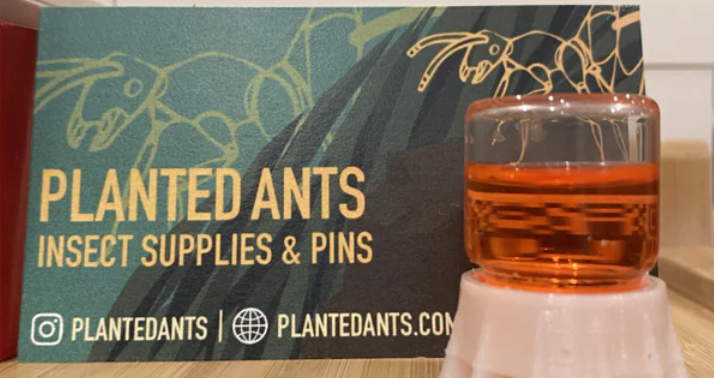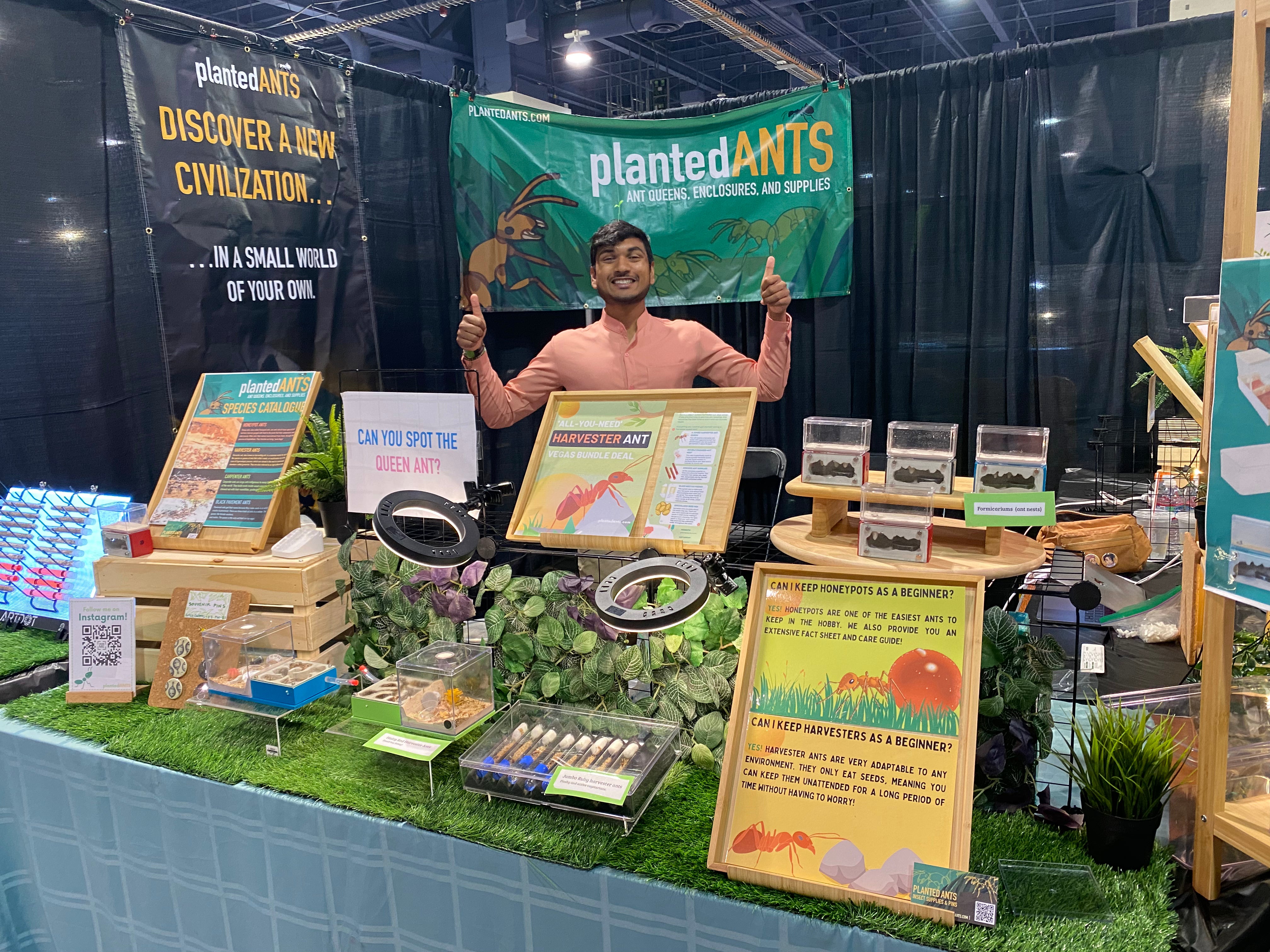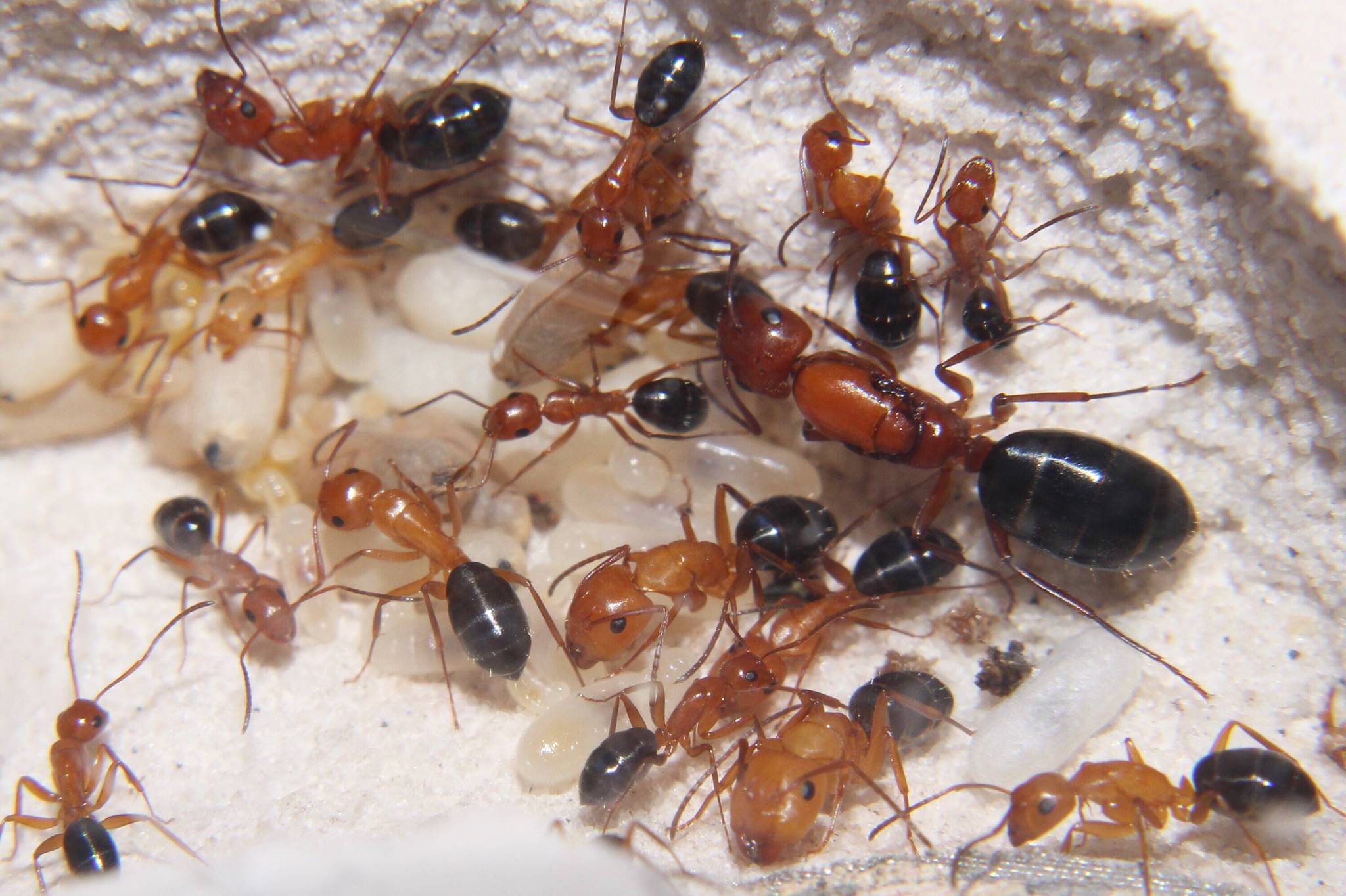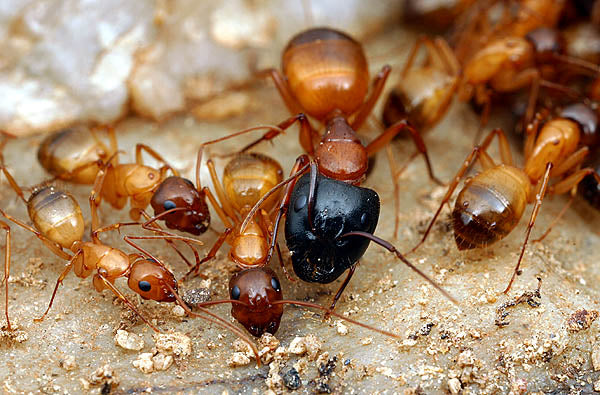Harvester Ant Ultimate Handbook:
The Harvester Ant Ultimate Care Guide:
By: Planted ANTS
Questions?
Email us!
Email: plantedants@gmail.com
Congratulations on your new and intriguing ANT companions – the captivating Harvester ants from Planted ANTS. We are delighted to welcome you to the enchanting world of ant-keeping, where you'll experience the awe-inspiring lives of these tiny creatures up close and personal.
PlantedANTS' mission is to provide you with the essential tools and knowledge to ensure the well-being and happiness of your Harvester ants, transforming your home into a thriving miniature ecosystem.
As an esteemed customer of our Planted ANTS Store, you have embarked on an extraordinary journey filled with wonder, discovery, and the joys of nurturing your very own ant colony.
Within the pages of this ebook, aptly titled "The Harvester Ant Keeper's Handbook," we have carefully curated a wealth of knowledge and insights to guide you on this rewarding adventure.
At Planted Ants, we are more than just an online store – we are passionate about fostering a connection between you and nature's tiniest marvels. Our Harvester ants are meticulously raised and cared for, guaranteeing that they arrive at your doorstep healthy and ready to amaze you with their fascinating behaviors and cooperative endeavors.
In this comprehensive guide, we'll walk you through the process of setting up the perfect habitat, from selecting an appropriate ant farm to creating a conducive environment for your new ant colony to flourish. We'll reveal the intricacies of Harvester ant behavior, from their mesmerizing foraging patterns to their complex communication techniques. You will learn the art of feeding and nurturing your ants, understanding their unique dietary needs to maintain their vitality and vigor.
But the journey doesn't end there! We'll also explore the captivating social structure of these tiny wonders, as they work harmoniously within their colony, each member playing a vital role in the collective success. Witness the marvel of their teamwork and dedication, and you'll find yourself inspired by the valuable life lessons they teach.
"The Harvester Ant Keeper's Handbook" isn't just a guide; it's an invitation to be a part of something extraordinary. Ant-keeping isn't just a hobby; it's a pathway to appreciating the wonders of nature's smallest architects. By embarking on this adventure, you'll witness the profound impact that these tiny beings can have on your life – fostering a sense of responsibility, patience, and a deeper connection to the natural world.
So, turn the page and embark on this captivating journey with us. The Harvester Ant Keeper's Handbook awaits, ready to unveil the wonders of PlantedANTS treasures and empower you to become a caring and conscientious ant enthusiast. Let the magic of ant-keeping begin!
_____________________________
Getting Started: Useful Tools
Essential tools for successful Harvester ant colony maintenance.
Getting Started: Picking Queen Ant
Before we get into any info, please feed your queen some protein or nectar after she arrives. They have had a long trip and need some food. Please feed your ants every 2-3 days, and take out the old pieces of food. You may feed them in a test tube, please keep a queen in her test tube until she has workers, but make sure to offer her some food every so often without stressing her out.
These ants are semi-claustral, meaning they must receive food while they don’t have workers. They also need heat! We recommend getting a heat pad or cord to keep them warm.
WARNING: These ants do sting, so please be careful with them.
Harvester ants are a group of ants belonging to the genus Pogonomyrmex. They are well-known for their unique foraging behavior, where they predominantly collect and store seeds as their primary food source. These ants are primarily found in arid and semi-arid regions of North and South America.
Here are some key characteristics and features of harvester ants:
Foraging Behavior: As their name suggests, harvester ants are skilled seed harvesters. They have specialized mandibles that allow them to cut and gather seeds from various plants. The collected seeds are then carried back to their nests, where they are stored as a food reserve. This behavior is essential for their survival in environments where food resources may be scarce or seasonal.
Size and Appearance: Harvester ants vary in size, with worker ants typically measuring between 0.2 to 0.5 inches (5 to 13 mm) in length. They come in different colors, ranging from red and brown to Desert, depending on the species. Like other ants, they have distinct body segments, including the head, thorax, and abdomen.
Colonies: Harvester ants are social insects that live in colonies. Their colonies can vary in size, ranging from a few hundred to tens of thousands of individuals, depending on the species and environmental conditions. Each colony has a queen responsible for laying eggs and producing new members of the colony.
Defensive Behavior: Harvester ants are known for their aggressive and defensive behavior when their colony is threatened. They can deliver painful stings, and some species have venom that can cause discomfort or allergic reactions in humans. As a result, it is essential to exercise caution when interacting with harvester ants in the wild.
Ecological Importance: Harvester ants play a crucial role in their ecosystems. Their seed-gathering behavior helps disperse seeds, contributing to plant growth and the maintenance of plant diversity in their habitats. Additionally, they are a food source for various predators and help regulate insect populations through predation.
Interactions with Humans: Harvester ants are often encountered in natural areas, such as grasslands, deserts, and open woodlands. Some species have also adapted to living in urban environments, where they can be found foraging near parks, gardens, and other green spaces. However, it is essential to avoid disturbing or antagonizing their nests, as they can respond with aggressive behavior.
Overall, harvester ants are fascinating insects that have adapted to thrive in arid environments by developing specialized seed-harvesting behaviors. Their ecological roles and distinctive behaviors make them intriguing subjects for scientific study and observation in their natural habitats.
Harvester ants are also opportunistic foragers and will eat a wide variety of food including nectar, insects and seeds.
In terms of growth, Harvester ants grow relatively slowly; it may take several weeks for a colony to hatch its first generation of workers. They do not sting, which makes them beginner-friendly as they are less aggressive than other ant species.
In terms of keeping them as pets, they are considered beginner-friendly because they are easy to care for and can be kept in a variety of setups, including test tubes, formicaria, or outdoor setups. They also don't require special lighting or temperature control, making them suitable for beginners.
Ant-Specific Needs: Harvester Ants
Harvester ants, also known as Camponotus spp, are a species of ants that require special care due to their specific needs and habits. Here are some special care needs for harvester ants:
- Food: Harvester ants are opportunistic feeders, and require a varied diet that includes protein, sugar, and fats. They can be fed with small insects, like crickets, fruit flies, and mealworms, as well as honeydew, nectar, and jelly. They also require a source of water.
- Temperature: Harvester ants require a relatively warm and humid environment, with temperatures between 79-85°F and a humidity level of 60-70% (humidity is not too important). It's important to maintain a consistent warm temperature and humidity level to ensure the colony's well-being. A formicarium with a heating system or a heat mat is best to maintain optimal temperature.
- Growth rate: Harvester ants have a relatively medium growth rate, with workers reaching maturity in about 1-2 months. They will also require more space as the colony grows to accommodate the expanding population.
- Formicarium: Harvester ants are known for their big repletes (harvesters) ants. It's important to provide them with a suitable formicarium that is dry and concrete and mimics sand stone.
- Observation: Harvester ants are known for being more active than other species, and their colonies can grow to be quite large. It is important to regularly check the colony's size and behavior and to adjust the formicarium accordingly to prevent overcrowding. (this won’t be a problem if you regulate feeding).
Growing: Queen in Tube
Tube Care:
Taking care of an ant queen in a glass tube is an important task that requires attention and care. Here are a few tips to keep in mind when caring for your queen:
- Make sure the glass tube is clean and free of debris. A clean environment is essential for the queen's health and well-being.
- Provide a suitable environment for the queen, this means a temperature of around 80-85°F and humidity of 50-60% is ideal (use a heat mat if necessary, and the humidity is provided by the water at the back of the tube, just make sure that the back of the tube does not run out of water).
- Provide a source of food and water, this can be done by using a small cotton ball dampened with sugar water. Be sure to change the cotton ball and refill the water source as needed.
- Keep the queen in a , quiet location. Ant queens are sensitive to light and noise, so it's important to provide a peaceful environment for them.
- Monitor the queen regularly to ensure that she is healthy and active. If you notice any signs of distress, such as lethargy or lack of appetite, consult an ant-keeping expert for advice.
By following these steps, you can provide the best possible care for your queen and give her the best chance of starting a healthy colony.
Note: The time it takes for an ant queen to start her colony can vary depending on many factors, including the species of ant, the conditions of the environment, and the availability of resources.
In general, it is difficult to predict exactly how long it will take for an ant queen to start her colony, as many variables can affect the process. However, with proper care and attention, the queen can be given the best chance of starting a healthy colony.
Growing: Ant Queen with Larvae
In ant colonies, the brood, or immature ants, are the future of the colony and require a diet high in protein to grow and develop properly. Without enough protein, the larvae may not develop properly and may not survive until adulthood.
Growing: Harvester Ant Queen with Workers
Nanitics, also known as "first-generation ants," are the first ants that are born in a new colony. They are typically small in size and have not yet developed strong bodies. They are usually the first ants to be produced by a colony and are responsible for building and maintaining the colony. They are also responsible for foraging for food and taking care of the queen and other young ants.
Nanitics are usually not as strong as future worker ants, but they are still able to perform important tasks such as foraging and caring for the colony's brood. Their small size also allows them to navigate through tight spaces and access hard-to-reach areas in the colony. They have a vital role in the colony as they are the ones who take care of the queen and the young until the mature workers are developed.
It's important to note that, nanitics will eventually grow and develop into mature worker ants as they age and the colony grows. The colony will continue to produce new nanitics to replace the older ants as they die or retire. The queen will stay fertilized throughout her life.
NOTE: These are the most important workers a queen can have. Avoid killing or losing these ants at all costs.
Taking care of an ant colony in a glass tube is an important task that requires attention and care. Here are a few tips to keep in mind when caring for your colony:
- Gather your materials: You will need a pair of forceps or featherweight tweezers, and a small cotton ball soaked in nectar.
- Remove the cotton ball from the glass tube. Remove any residue and/or past food left in the tube.
- Carefully use the tweezers to insert the small cotton ball/food into the tube.
- Handling escapees. If there are escapees, use your tweezers to carefully pick up the escapee ant and drop them back into the tube.
- Seal the glass tube with a cotton ball. Make sure that it fits snugly.
- Monitor the colony regularly to ensure that they are healthy and active. If you notice any signs of distress, such as lethargy or lack of appetite, consult an ant-keeping expert for advice.
By following these steps, you can provide the best possible care for your queen and give her the best chance of starting a healthy colony.
Moving Colony from Tube to Formicarium
Here are some instructions on how to move ants from a test tube to a formicarium:
- Gather your materials: You will need a formicarium, a test tube, a pair of forceps or tweezers, and a small paintbrush.
- Prepare the formicarium: Make sure that the formicarium is properly set up and ready for the ants to move in. The formicarium should have a suitable substrate, a water source, and a food source.
- Locate the colony: Carefully remove the test tube from the incubator and locate the colony of ants at the bottom of the tube.
- Method of Extracting Queen First*
- Use a paintbrush: Use a small paintbrush to gently coax the ants out of the test tube and into the formicarium. You can also use a toothpick or a small stick to help guide the ants.
- Transfer the ants: Carefully transfer the ants to the formicarium using forceps or tweezers. Be gentle and try not to crush any of the ants.
- Release the ants: Once you have transferred the ants, release them into the formicarium and give them some time to explore their new home.
- Observe: Observe the ants for a few days to make sure they are settling in well and are able to find food and water.
- Clean the test tube: Once you have transferred all the ants, clean the test tube thoroughly to prevent contamination and for future use.
It's important to note that this process should be done gently and with care, as the ants are delicate creatures, handle them carefully and with respect. Also, make sure to observe the ants for a couple of days after the transfer to ensure they are doing well and have settled in the new formicarium.
Colony Care
- Temperature: Harvester ants require a warm and humid environment. The optimal temperature range for Harvester ants is between 75-80 degrees Fahrenheit (24-29 degrees Celsius).
- How to maintain temp (heat mat, you can find this on our shop)
- Humidity: The colony's humidity level should be kept between 60-80%. (Regulated already with our nests).
- Substrate: Provide a substrate of sand or soil for the ants to burrow in.
- Food: Harvester ants require a diet high in carbohydrates and proteins. Offer them a variety of fruits and vegetables such as apples, grapes, and carrots. They also need protein sources such as small insects or mealworms. Provide small amounts of food daily, so as to not overfeed.
- Water: Harvester ants require a steady supply of water. Provide a small water dish for the colony or mist the substrate regularly to maintain a suitable level of humidity.
- Monitoring: Regularly check the colony for signs of disease or pest infestation. If you notice any issues, take steps to address them immediately.
- Privacy: Harvester ants are sensitive to disturbance, so it is important to give them a quiet and private space to live in. Avoid moving the colony around too much and minimize handling of the ants.
Overview: Colony Stages
Feeding
When feeding live food to your ant colony, it's important to consider the colony's needs and the size of the food source. Here are some guidelines for when to feed live food to your ant colony:
- New colonies: When setting up a new colony, it's important to provide a steady food source to help the colony establish itself. Feed the colony small amounts of injured/freshly killed protein, such as small insects or mealworms, daily or every other day.
- Established colonies: The size of your colony will also play a role in how often you need to feed live food. A larger colony will require more food than a smaller colony.
- Seasonal fluctuations: Ant colonies may experience seasonal fluctuations in activity and food needs. During the warmer months, colonies may require more food and water, while during the colder months, they may require less.
- Observe: Observe the colony's behavior and food storage to determine if the colony needs more or less live food. If the colony is storing large amounts of food, you can reduce the frequency of feedings. If the colony is not storing enough food, increase the frequency of feedings.
It's important to note that overfeeding the colony can lead to health issues and a disordered colony. Also, when feeding live food, make sure to provide a variety of food sources to ensure a balanced diet for the colony.
Maintenance: Formicarium
In ant colonies, the brood, or immature ants, are the future of the colony and require a diet high in protein to grow and develop properly. If a colony has less brood, it may need to be fed more protein to ensure the survival and growth of the colony.
Ants are cold-blooded insects and their activity levels are directly influenced by the temperature of their environment. If an ant colony is not receiving enough heat, the ants may appear slow or sluggish. This is because their metabolism is slowed down in response to the lower temperatures, which affects their ability to move and perform other activities.
Here are some signs that it may be time to clean your ant formicarium:
- Strong odors: An ant formicarium that is not cleaned regularly can start to emit strong odors, which can be an indication that it needs to be cleaned.
- Visible mold or fungus: If you notice mold or fungus growing in or around the formicarium, it's a sign that the formicarium is not being kept clean and dry.
- Pest infestations: If you notice other insects or pests in the formicarium, it's a sign that the formicarium is not being kept clean and hygienic.
- Overcrowding: If the formicarium becomes overcrowded, it can be difficult for the ants to keep the formicarium clean and hygienic. This can lead to poor health and an increased risk of disease among the ants.
- High levels of debris: A formicarium with high levels of debris, such as food scraps or dead ants, can be a sign that the formicarium needs to be cleaned.
- Reduced activity: If you notice that the ants in the formicarium have become less active, it can be an indication that the formicarium is not being kept clean and that the ants are not healthy. (This should only be taken into account once the colony has grown to about 40 to 50 workers).
It is important to note that different species of ants have different needs and cleaning frequencies, be sure to research the specific species of ant you are keeping to know the best cleaning schedule.
Regular cleaning of the formicarium can help keep the ants healthy and prevent disease and pests from spreading.
Cleaning an ant formicarium is an important task to ensure the health and well-being of the colony. Here are some guidelines for cleaning an ant formicarium:
- Remove the ants: Before cleaning, carefully remove the ants from the formicarium and place them in a temporary container with a food and water source.
- Dispose of waste: Remove any dead ants, waste food, or other debris from the formicarium using tweezers or a small brush.
- Clean the substrate: Remove the substrate and clean it with a small brush or vacuum. If the substrate is heavily soiled, you may need to replace it entirely.
- Clean the formicarium: Clean the formicarium with a mild solution of water and vinegar or water and alcohol. Make sure to clean all surfaces, including the walls, floor, and any decorations or furniture. Rinse the formicarium thoroughly with water and let it dry completely before returning the ants.
- Sterilize the formicarium: If the colony has had an outbreak of disease or pests, it is important to sterilize the formicarium. You can use an alcohol or vinegar solution to spot-clean food stains off the surfaces of the formicarium. Rinse the formicarium thoroughly with water and let it dry completely before returning the ants.
- Return the ants: Once the formicarium is clean and dry, return the ants to their home. Give the colony time to adjust to the new environment before feeding them.
It's important to note that you should clean the formicarium at least once a month, or more frequently if necessary. Also, when cleaning, it is important to use mild and non-toxic cleaning products to avoid any harm to the ants.
Upgrading: Expanding Your Colony
Ant colonies can typically survive in formicariums (ant nests), also known as "ant farms," of any size. Expansion is an option if you want to see your colony grow. Expanding an ant formicarium can be done if you’d like to grow your ant colony to an additional formicarium. Here are some steps to follow when expanding an ant formicarium:
- Research: Research the specific needs of the ant species you are keeping. Different ant species have different space and nesting requirements, so it's important to make sure that the formicarium will be suitable for the colony.
- Plan: Plan the expansion by considering the size of the colony and the space that will be required for it to grow. You will also need to consider the type of expansion you want to make, whether it's adding more chambers or an additional formicarium.
- Gather materials: Gather the materials you will need for the expansion, such as additional formicaria, tubing, or connectors.
- Connect the formicarium: Connect the formicaria using tubing or connectors. Make sure to seal any connections to prevent leaks and to keep the colony separated.
- Add substrate: Add substrate to the new chambers, and make sure it is deep enough for the ants to burrow in.
- Add food and water: Provide food and water to the new chambers, making sure that they are easily accessible to the ants.
- Monitor the colony: Monitor the colony for a few days to make sure that the ants are adjusting to the new expansion and that they have access to food and water.
Ant-keeping is a fascinating hobby, but it is important to understand that ants are territorial creatures and will fiercely defend their colony and resources from other ants. Therefore, it is important to understand that you do not combine ant colonies. Combining colonies of different ant species or even different colonies of the same species can lead to aggressive behavior and territorial fighting. This can result in the death of ants from both colonies, and can also spread diseases and parasites.
Replacement: Replacing your Formicarium
Here are a few signs that indicate it may be time to replace your ant formicarium:
- Disease or Parasites: If you notice a high number of dead ants or signs of disease or parasites within the colony, it may be best to replace the formicarium to prevent the spread of the issue.
- Pest Infestations: If you notice any other pests, such as mites or springtails, in the formicarium, it may be best to replace them to prevent the infestation from spreading.
- Odor: If you notice an unpleasant odor coming from the formicarium, it may be a sign that the formicarium needs to be replaced, as it could be caused by mold or other contaminants.
- Formicarium Damage: If the formicarium has been damaged, whether by accident or due to an external factor, it may no longer be suitable for the colony and will need to be replaced.
By recognizing these signs early, you can ensure that your colony has a safe and healthy environment in which to thrive.
Death: Reasons
There are several common reasons why ant queens may die, including:
- Insufficient food and water: Ant queens need a consistent and reliable source of nutrition to survive. Without proper food and water, the queen will become weak and may eventually die.
- Environmental stress: Ant queens are sensitive to changes in temperature and humidity. Extreme temperatures or fluctuations in humidity can cause stress and lead to death.
- Disease or parasites: Ant queens are susceptible to various diseases and parasites, which can weaken or kill them if left untreated.
- Pesticides: Exposure to pesticides can be fatal for ant queens and the colony as a whole.
By understanding the common reasons for ant queen death, you can take steps to prevent it and ensure the health and well-being of your colony.
⬇ PLEASE READ LAST PAGE ⬇
Conclusion:
In conclusion, this ebook serves as a comprehensive and invaluable resource for all ant enthusiasts, aspiring or experienced, who share our passion for these incredible creatures.
We embarked on this journey with one goal in mind: to provide you with the knowledge, guidance, and support needed to thrive as responsible ant keepers.
We are proud to have provided this handbook to you free of charge, despite the considerable effort and resources required to create it. Our motivation lies in ensuring that ant enthusiasts like you have access to the best possible guidance and support, regardless of financial constraints.
As you embark on this exciting endeavor, always remember that we are here to support you every step of the way. Whether you have questions, encounter challenges, or want to share your successes, we eagerly await your inquiries and achievements. Your passion for ant keeping is a testament to your love for nature, and we are honored to be a part of your journey.
May this handbook serve as a valuable resource, empowering you to create a nurturing environment for your ant colonies while fostering a deeper appreciation for the tiny yet extraordinary beings that enrich our planet.
Happy ant keeping!
\(^ω^\)

